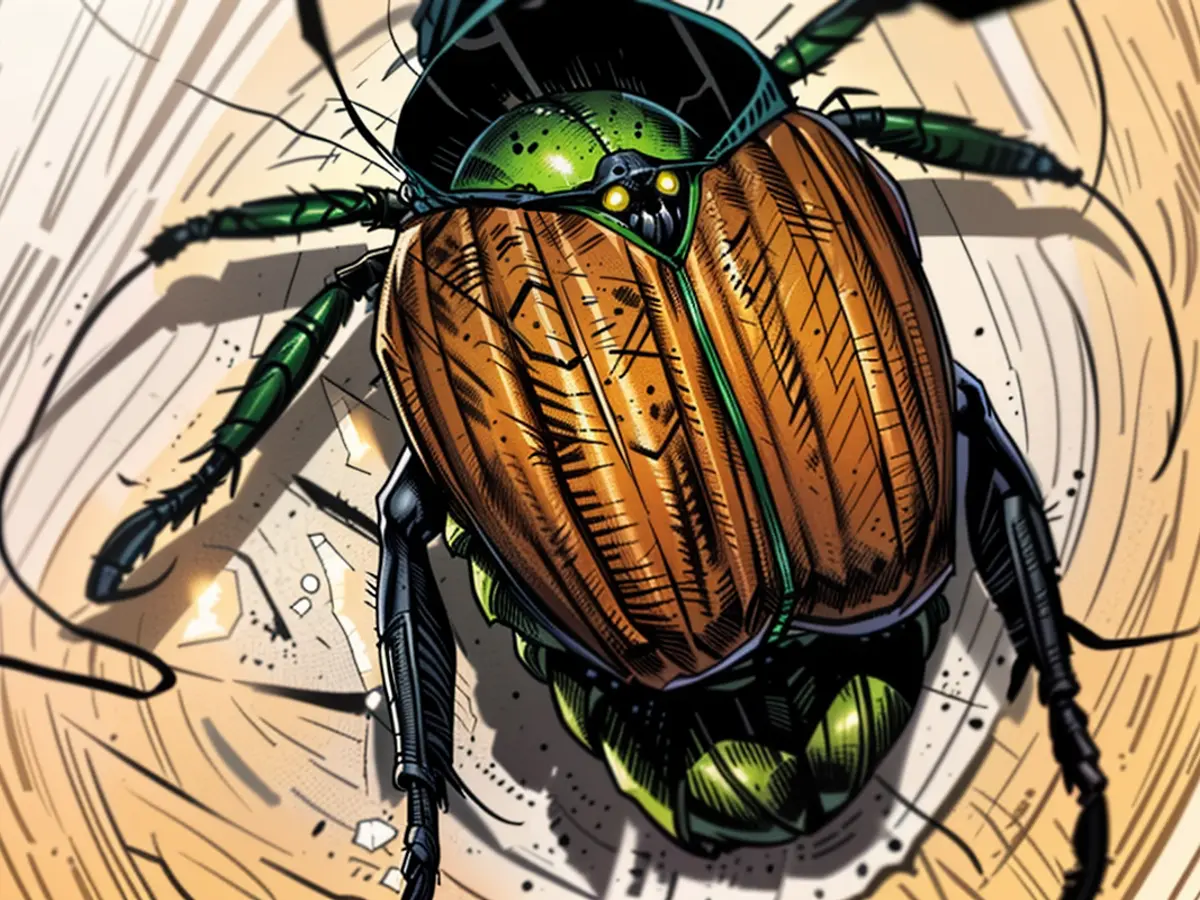- First signs of Japanese beetles in the southwest this year
For the first time this year, live Japanese beetles have been detected in Baden-Württemberg. Individual male specimens were caught at the end of July in traps set by the Plant Protection Service in Freiburg and the Ludwigsburg district, as announced by the Agricultural Technology Centre Augustenberg (LTZ) in Karlsruhe.
The Japanese beetle (Popillia japonica), originating from Asia, is classified as a pest in the European Union that can cause significant damage. They attack orchards, vineyards, forests, green spaces, and gardens, feeding on over 300 plant species and stripping them bare. There are no natural enemies of this species in this region.
Experts at the LTZ have been concerned for some time. A larger colony of Japanese beetles was recently discovered in Switzerland near the border, leading to the establishment of a so-called infestation zone in the neighboring district of Lörrach for the first time in Germany. Plant material, for instance, is to remain on site for the time being.
Stricter Monitoring
However, the individual findings now in Baden-Württemberg, further from the border, have not triggered any special protective measures, said LTZ Plant Health Expert Frauke Rinke. Since 2021, there have been individual findings each year, with the insects likely being introduced via trucks. This is also suspected in the current case. The Plant Protection Service has immediately increased the number of traps in the affected areas to ensure that these are indeed isolated findings.
The Plant Protection Service has set up a monitoring network of 82 traps throughout Baden-Württemberg, mainly along major traffic routes and at risk locations, to prevent the spread and permanent establishment of Japanese beetles.
The Japanese beetle is about one centimeter long, has a metallic green head and brown wings. It is distinguished by five white hair tufts on each side of the abdomen and two white hair tufts at the end. According to the LTZ, the females prefer to lay their eggs in moist or wet grassy areas. "The larvae that hatch from these eggs feed on grass roots and cause damage to meadows and lawns."
Preventing Invasion
To prevent the settlement of this species in Germany, people are urged to report any suspicious findings to the responsible Plant Protection Service in their respective federal state. The LTZ in Baden-Württemberg asks the public to catch, freeze, and photograph any beetles that match the characteristics of the Japanese beetle. The photo should be sent by email to [email protected] along with the location of the find.
The concern about the spread of this invasive species in Germany is so great that the Federal Ministry of Agriculture and the Julius Kühn Institute (JKI), the federal research institute for crop plants, have already spoken out in recent days. Experiences from countries like Italy show that the Japanese beetle can naturally spread up to ten kilometers per year within the first few years.
"It must be prevented," emphasized Bernhard Schäfer, head of the JKI's Institute for Questions of Plant Health. The beetle could be introduced as a "stowaway" on vehicles or with plant parts like flower bouquets.
The Japanese beetle infestation in Switzerland near the border has prompted neighboring districts like Lörrach in Germany to establish an infestation zone for the first time. The Swiss, with their close proximity to the affected area, should be vigilant and report any suspicious findings of Japanese beetles to their local Plant Protection Service.







